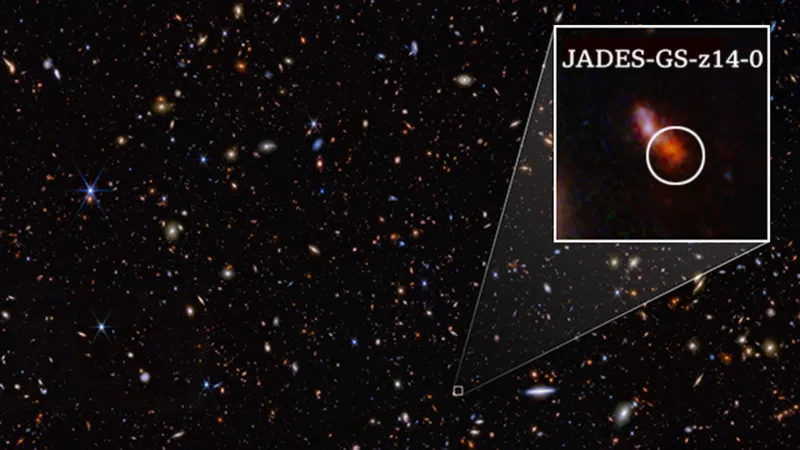The James Webb Space Telescope shattered its own record by discovering the farthest distant galaxy to date.
The stars in the JADES-GS-z14-0 group were discovered only 290 million years after the Big Bang.
To put it another way, if the universe is 13.8 billion years old, then we are only viewing this galaxy at 2% age.
To make the discovery, Webb used sensitive infrared detectors and its massive 6.5-meter-wide primary mirror.
A galaxy observed 325 million years after the Big Bang held the previous record for the telescope.
According to astronomers, the size and brightness of the most recent observation are more fascinating than its enormous distance—astonishing as it is.
According to Webb, the galaxy spans more than 1,600 light years. Gas falling into a supermassive black hole is the primary source of light in many of the most bright galaxies. However, the JADES-GS-z14-0 scale suggests that this isn’t the reason for this particular instance. Rather, the scientists think that young stars are generating the light.
“The galaxy appears to be several hundred million times more massive than the Sun based on the amount of starlight present! Stefano Carniani and Kevin Hainline, two Webb scientists, stated, “This begs the question: how can nature make such a bright, massive, and large galaxy in less than 300 million years?”
Dr. Hainline is from the University of California, while Dr. Carniani is connected to the Scuola Normale Superiore in Pisa, Italy.







